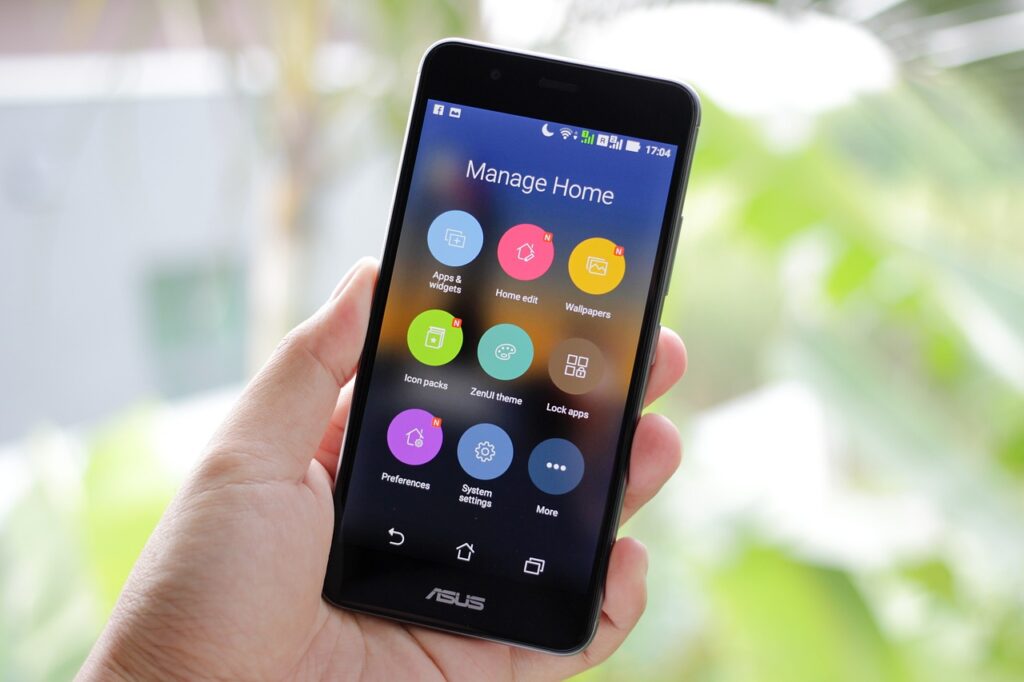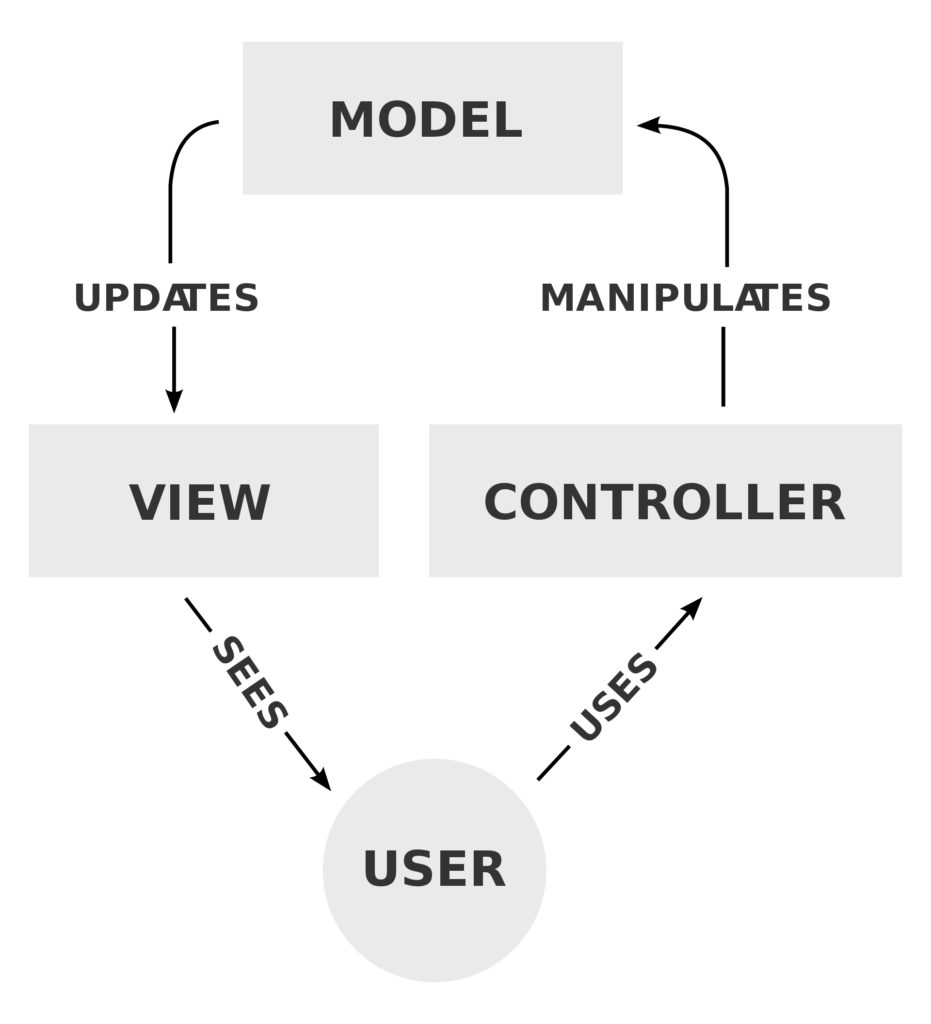Architectural Patterns: Build High Quality Apps in less time

The mobile app market is growing rapidly and is expected to reach a size of $930 billion by the end of 2023. As competition in the market gets tougher, it becomes really important to create flexible solutions while also keeping costs low. Therefore, this is where software architectural patterns come into play.
By employing these patterns, we can achieve the desired outcomes. Firstly, they provide proven structures and designs. This helps in building efficient and scalable mobile apps.
Secondly, these patterns serve as a guide to organising the app’s code. Thereby making it easier to adapt to future changes.
Importantly, they contribute to the overall success of mobile app development!
How do Architectural Patterns help?
In a typical product lifecycle, we begin by conceptualising an app idea. Thereafter, we develop and launch it to a real audience to gather early feedback. However, we often overlook the essential steps required for a sustainable software lifecycle. Importantly, one crucial factor in this regard is selecting the appropriate architecture.
Choosing the right architecture enhances code quality and lays the foundation for the efficient development of subsequent features. On the other hand, neglecting this phase may result in multiple regressions just before the release date. This could result in an entire team working late hours to rectify them.
Hence architectural patterns can help in the following ways:
- It improves code Quality in terms of modularity, scalability, reusability, and testability.
- Helps in better team coordination by having a clear separation of responsibilities that an individual can take.
- Easy to onboard a new person into project source code without worrying about making them understand the entire system perfectly.
- Easy to change/replace a particular module without affecting the entire system.
Architectural Patterns
It is recommended to consider utilising the following three widely used architectural designs. This reduces long-term development & maintenance costs. These patterns include:
- MVC (Model View Controller)
- MVP (Model View Presenter)
- MVVM (Model View View Model)
MVC (Model-View-Controller) Architecture Pattern

MVC (Model-View-Controller) is an architectural pattern that separates the user interface from the business logic and data. It has been around since the early days of software development and is still widely used in various applications today.
MVC separates the user interface from the business logic and data by dividing the app into three distinct components. These components are the model, view, and controller. First, the model represents the data and business logic of the application. Second, the view represents the user interface and handles user input. Lastly, the controller acts as an intermediary between the model and the view. It handles data transfer and updates between the two.
The MVC architecture separates the view and controller. As a result, ensuring that the user interface remains independent of business logic and data. Modifying the user interface becomes easier. As it does not affect the application’s underlying data or business rules. It also makes it easier to write unit tests, as the controller can be tested independently of the view.
Advantages and disadvantages of using MVC
Advantages:
- MVC separates the user interface from the business logic and data. Therefore making the codebase easier to understand and maintain.
- The separation also makes it easier to write unit tests for the controller. As a result, it can be tested independently of the view.
- MVC simplifies adding new features or modifying existing ones. Also, changes in one component don’t always impact the others, making it easier to manage.
Disadvantages:
- Complexity: Implementing MVC requires more upfront work than other architectural patterns.
- Over-engineering: For simple applications, the added complexity of MVC may not be necessary.
MVP (Model-View-Presenter) Architecture Pattern

MVP (Model-View-Presenter) enhances MVC (Model-View-Controller). In MVC, the View directly accesses data from the Model. However, in MVP, the Presenter takes on the responsibility of supplying data from the Model to the View.
The MVP consists of three components: Model, View, and Presenter. Firstly, the Model holds important data and business rules. Secondly, the View showcases the program’s notable features and facilitates user interaction. Importantly, the Presenter serves as the leader, ensuring equal contributions and connecting the Model and View. Thus, this separation of the View from complex Model details simplifies testing and enhances app development.
Advantages and disadvantages of using MVC
Advantages:
- Separation of concerns: The user interface, business logic, and data are all kept apart in an MVP. It facilitates comprehension and upkeep of the codebase.
- Testability: The separation of concerns allows for independent testing of the presenter. This further simplifies the process of writing unit tests.
- Scalability: Because changes to one component may not always have an impact on the others, MVP makes it simpler to add new features or adjust existing ones.
Disadvantages:
- Complexity: MVP implementation takes more work upfront compared to other architectural patterns.
- Over-engineering: The additional complexity of MVP may not be required for simple applications.
MVVM (Model-View-ViewModel) Architecture Pattern

MVVM (Model-View-ViewModel) is a design pattern that builds upon the concepts of MVP and MVC. In order to provide a robust and efficient way of designing Android apps. Microsoft first introduced it for the Windows Presentation Foundation (WPF) and has since been adopted by various platforms including Android.
MVVM (Model-View-ViewModel) incorporates a third element known as the ViewModel. It facilitates communication between the model and the view. The ViewModel doesn’t directly communicate with the view. Instead, it adapts and updates itself to reflect changes in the view.
Advantages and disadvantages of using MVVM
Advantages:
- MVVM separates the user interface from the business logic and data. Therefore, it makes it easier to understand. Plus maintain the codebase.
- MVVM also makes it easier to write unit tests for the ViewModel as it can be tested independently.
- In addition, reusing the ViewModel across multiple views reduces code duplication. Plus, it facilitates implementing changes throughout the app.
Disadvantages:
- MVVM can seem complicated at the beginning. Therefore, it may take some time for developers to understand data binding and get used to MVVM.
How we solved challenges using these architectural patterns at Madgical?
The ideal choice is a subject of consistent debate in various forums. At Madgical, we implemented MVVM architecture in several E-Commerce apps and 2D Game apps. The application of MVVM architecture resulted in the following positive impacts:
Increased Testability with a Shorter Release Cycle
Our unit tests achieved a code coverage of over 95%. This led to a shorter release cycle of 4 days. Additionally, daily unit testing significantly increased team confidence.
Increased Reusability
Reusing business logic in multiple places has its advantages. Let’s take an example from an E-Commerce app! Here we used the same View Model but with different UIs. This made it easier to reuse our code. Plus saved time and effort.
Better Team Coordination
Splitting tasks among different team members was easy. For instance, we assigned a senior team member to write business logic in View Models. On the other hand a fresher wrote the UI.
In another scenario, we defined function names in View Models. And implemented JUnit tests. Plus, a junior team member simply had to fill the functions with the correct logic. This was done to ensure that all JUnit tests passed.
Hence MVVM become an ideal choice in many of our projects.
Conclusion
In this article, we learned about the three most popular patterns in building mobile apps. MVC, MVP, and MVVM. However, there are many more you can find. A strong architectural foundation from the start ensures an efficient development process.
Further, it contributes to the maintenance of a smooth and healthy progress pipeline. Importantly, it significantly reduce operational cost in the long run. In addition it gives peace of mind to the developers, leaders, and clients. Importantly, there are many more ways how you can make your team productive by using these life hacks.
Disclaimer: Madgical Techdom does not necessarily endorse the views expressed by the author.
References:
Differences between MVC, MVP, and MVVM Architecture Patterns